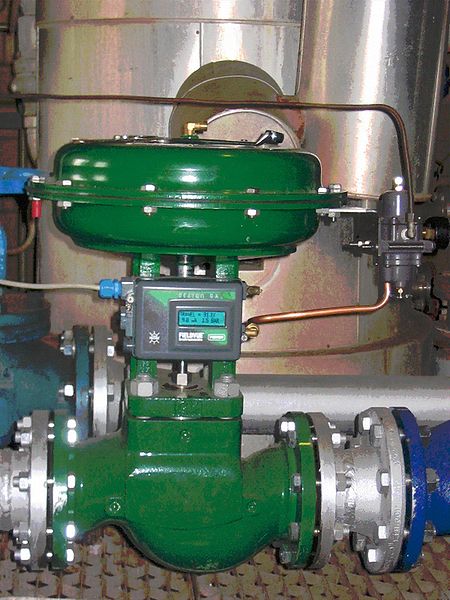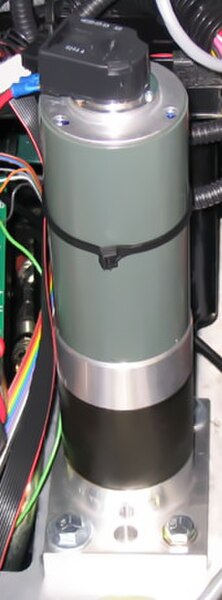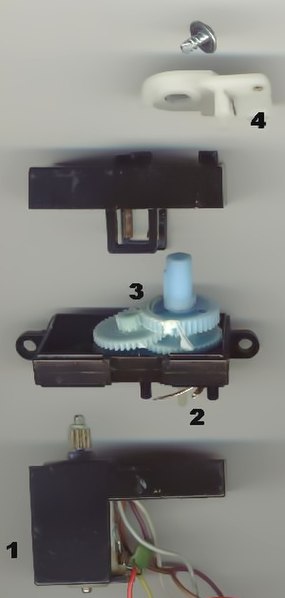Cruise control is a system that automatically controls the speed of an automobile. The system is a servomechanism that takes over the car's throttle to maintain a steady speed set by the driver.
Cruise command push button on the left of the dashboard of a 1967 AMC Ambassador
Cruise control on a Citroën Xsara
Cruise control on a 2000 Jeep Grand Cherokee steering wheel
Cruise control unit in the speedometer-cable and vacuum valve
In mechanical and control engineering, a servomechanism is a control system for the position and its time derivatives, such as velocity, of a mechanical system. It often includes a servomotor, and uses closed-loop control to reduce steady-state error and improve dynamic response. In closed-loop control, error-sensing negative feedback is used to correct the action of the mechanism. In displacement-controlled applications, it usually includes a built-in encoder or other position feedback mechanism to ensure the output is achieving the desired effect. Following a specified motion trajectory is called servoing, where "servo" is used as a verb. The servo prefix originates from the Latin word servus meaning slave.
Globe control valve with pneumatic actuator and "positioner". This is a servo which ensures the valve opens to the desired position regardless of friction
Industrial servomotor The grey/green cylinder is the brush-type DC motor. The black section at the bottom contains the planetary reduction gear, and the black object on top of the motor is the optical rotary encoder for position feedback.
Small R/C servo mechanism. 1. electric motor 2. position feedback potentiometer 3. reduction gear 4. actuator arm
Power-assisted ship steering systems were early users of servomechanisms to ensure the rudder moved to the desired position.








